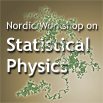Speaker
Martin Rosvall
(Umeå University)
Description
Ever since Aristotle, organization and classification have been
cornerstones of science. In network science, categorization
of nodes
into modules with community-detection algorithms has proven
indispensable to comprehending the structure of large integrated
systems. But in real-world networks, the organization rarely is
limited to two levels, and modular descriptions can only
provide cross
sections of much richer structures. For example, both
biological and
social systems are often characterized by hierarchical
organization
with submodules in modules over multiple scales. In many
real-world
networks, directed and weighted links represent the
constraints that
the structure of a network places on dynamical processes
taking place
on this network. Networks thus often represent literal or
metaphorical
flows: people surfing the web, passengers traveling between
airports,
ideas spreading between scientists, funds passing between
banks, and
so on. This flow through a system makes its components
interdependent
to varying extents. In my talk, I will present our
information-theoretic approach to reveal the multiple levels of
interdependences between the nodes of a network.

